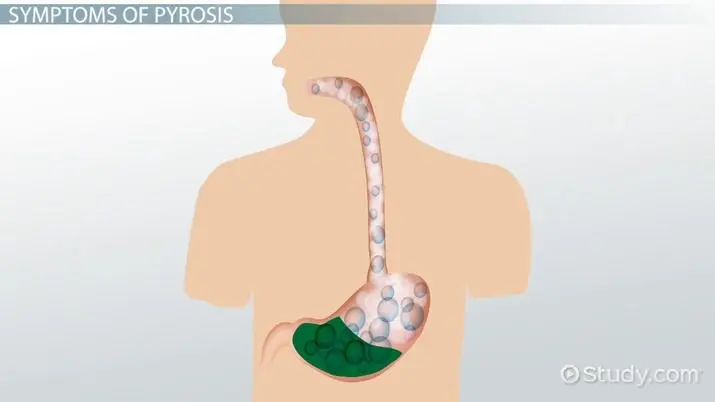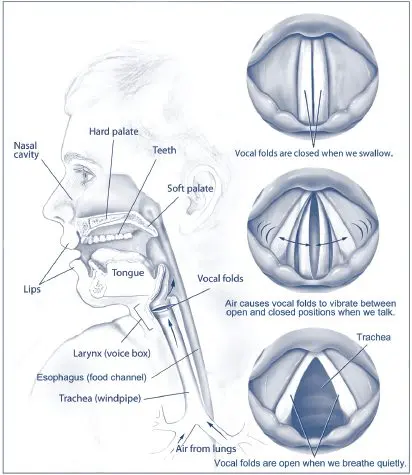Washing the tonsils
Contents
Washing tonsil lacunae for chronic tonsillitis
Recognizing the need to prescribe antibiotics in the treatment of chronic tonsillitis, experts do not reject other methods of treating this pathology. Inflammation of the tonsils in chronic tonsillitis is caused and maintained by bacterial flora. Therefore, by solving the problem of evacuating bacteria along with the nutrient medium on which they grow, you can speed up the healing process.
For this purpose, ENT doctors use tonsil rinsing. Since the anatomical structure of these accumulations of lymphoid tissue is such that they contain multiple depressions (lacunae) and irregularities (crypts), excellent preconditions are created for the retention of food, dead epithelium and leukocytes on which staphylococci and streptococci multiply. It is important to rinse your tonsils promptly and thoroughly, leaving no chance for bacteria to flourish in the far corners.
Why do you need to rinse the tonsil lacunae?
- Efficiency. There are clinically proven results of this treatment. It allows you to bring chronic tonsillitis into long-term stable remission.
- Security. The rinsing itself cannot cause injury to the pharyngeal mucosa or damage the tonsils.
- Non-allergenic. There is no such risk of allergic reactions as with systemic use of antibiotics.
- After such treatment no dysbiosis remains or conditions for increased growth of fungal infection.
- Treatment price is available. In addition, the overall cost of treatment is reduced when using tonsil lavage.
- Timely rinsing of the tonsils allows reduce the risk of needing tonsil removal both now and in the future.
- At the way no age or gender restrictions. Pregnancy is a contraindication only for the ultrasound version of the procedure.
Contraindications to hardware lavage of tonsils
- Acute infectious diseases.
- Hypertension 2B and 3 stages with frequent crises.
- Active pulmonary tuberculosis.
- Oncopathology.
- Severe dysfunction of the autonomic nervous system.
- Progressive atherosclerosis of coronary and cerebral vessels.
- Decompensation of chronic cardiovascular and pulmonary pathologies.
- Pregnancy up to three or more than seven months.
- Retinal disinsertion.
Methods for washing tonsils
1. Using a syringe. The antiseptic solution is drawn into a twenty-gram syringe for washing the tonsils and is applied in a stream to the tonsils.
Advantages of the method:
- cheap, no need to use physiotherapy equipment,
- when using a disposable syringe, the problem of antiseptics is automatically solved,
- there is an opportunity to try to rinse the tonsils at home yourself,
- can be used for pregnant women.
Cons:
- it is not possible to wash away plaque from all gaps, since hard-to-reach places remain unwashed,
- separate suction is required for pathological discharge,
- washing the tonsils at home is not much better than regular rinsing, since it is impossible to carry out the procedure efficiently on your own without sufficient skill.
2. Vacuum rinsing of the tonsils using the “Tonsillor” apparatus. This tonsil rinsing device is multifunctional. Using the nozzle, an antiseptic solution is pumped and sucked out. The contents of the lacunae are removed along a pressure gradient.
Advantages of the method:
- complete cleansing of the tonsils not only from the surface, but also in the depths of the lacunae,
- no additional tool required (suction),
- after a course of procedures, tonsillitis recedes for a long time,
- Possible from the third to seventh months of pregnancy.
Cons:
- treatment is carried out on an outpatient basis,
- contraindicated in the first trimester of pregnancy.
3. Deep hardware lavage of the tonsils in combination with ultrasound and phonophoresis – this is a vacuum ultrasonic washing of the tonsils. Using the Tonsillor apparatus, ultrasound with a frequency of 26,5 kHz causes cavitation (the formation of gas bubbles with their subsequent collapse), which causes the death of bacteria and liquefaction of the pathological contents of the lacunae. The method is complemented by phonophoresis, that is, the introduction of medicinal substances into the tonsils using ultrasound.
Advantages of the method:
- deep cleansing is combined with the introduction of drugs that improve the sanitation and healing of inflammation,
- the tonsils are completely cleansed, while the bacteria die and are removed along with what could serve as food and shelter for them,
- All stages of the procedure are carried out using the same apparatus.
Cons:
- Ultrasound procedures are contraindicated for pregnant women.
Medicines used for rinsing
Rinsing the tonsils can be done with any antiseptic solution suitable for mucous membranes. Requirements for the solution:
- must be non-toxic
- should not cause a chemical burn to the mucous membrane of the pharynx and tonsils,
- must have a wide spectrum of antiseptic action, that is, it must be bactericidal or bacteriostatic for the main pathogens of chronic tonsillitis: streptococci and staphylococci. In addition, it should ideally influence viruses and fungi, so that after the destruction of bacteria, the normal biocenosis of the pharynx is not disrupted,
- the temperature of the solution should be comfortable so as not to cause a thermal burn with a solution that is too hot and not to provoke a drop in local immune defense with an excessively cold solution,
- the solution should not be a known allergen for the body, so as not to cause an allergy.
The most commonly used solution is furatsilin. Miramistin, staphylococcal bacteriophage or pyobacteriophage can be used for the same purpose. It is also possible to wash the tonsils with chlorhexidine. Hydrocortisone ointment is used for phonophoresis.
How often should you rinse your tonsils?
The need to rinse the lacunae of the tonsils can occur as often as chronic tonsillitis worsens or accumulations of pus, bacteria and dead cells cause discomfort in the patient (bad breath, difficulty eating). Before you start rinsing, you should visit a doctor. An experienced and competent ENT doctor will always be able to tell you how important it is to wash the tonsils at a given time, and whether it makes sense to combine it with systemic antibiotics.
How long should I rinse my tonsils?
Since the main purpose of rinsing the tonsils is to get rid of the infection and achieve remission of chronic tonsillitis, it is not enough to rinse the tonsils once. Although a thorough hardware procedure will remove the contents of the tonsils, we must remember that the process of microbial reproduction is ongoing. Also, the epithelium of the mucous membrane constantly sloughs off and the leukocytes that fight infection die off. In addition, food debris also forms food plugs in the tonsils. By the way, washing the plugs in the tonsils is also possible for those who do not have chronic tonsillitis.
Therefore, washing the tonsils is a course of treatment consisting of five to ten procedures. Since the doctor is responsible for the management of the patient and the result of treatment, he remains responsible and has the right to select the number of rinses and medications that will be used. It is important for the patient to find a doctor whom he will trust and a clinic equipped with all the necessary tools and materials necessary to solve the assigned problems.


